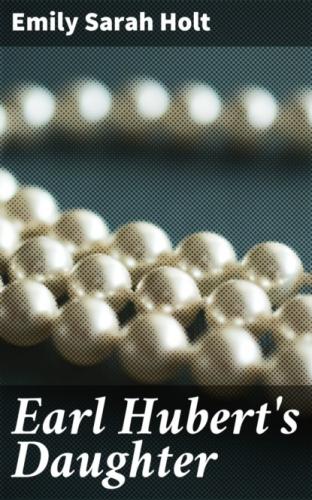Emily Sarah Holt
Earl Hubert's Daughter
The Polishing of the Pearl - A Tale of the 13th Century
Published by Good Press, 2019
EAN 4064066240493
Table of Contents
Preface.
The thirteenth century was one of rapid and terrible incidents, tumultuous politics, and in religious matters of low and degrading superstition. Transubstantiation had just been formally adopted as a dogma of the Church, accompanied as it always is by sacramental confession, and quickly followed by the elevation of the host and the invention of the pix. Various Orders of monks were flocking into England. The Pope was doing his best, aided by the Roman clergy, and to their shame be it said, by some of the English, to fix his iron yoke on the neck of the Church of England. The doctrine of human merit was at its highest pitch; the doctrine of justification by faith was absolutely unknown.
Amid this thick darkness, a very small number of true-hearted, Heaven-taught men bore aloft the torch of truth—that is, of so much truth as they knew. One of such men as these I have sketched in Father Bruno. And if, possibly, the portrait is slightly over-charged for the date—if he be represented as a shade more enlightened than at that time he could well be—I trust that the anachronism will be pardoned for the sake of those eternal verities which would otherwise have been left wanting.
There is one fact in ecclesiastical history which should never be forgotten, and this is, that in all ages, within the visible corporate body which men call the Church, God has had a Church of His own, true, living, and faithful. He has ever reserved to Himself that typical seven thousand in Israel, of whom all the knees have not bowed unto Baal, and every mouth hath not kissed him.
Such men as these have been termed “Protestants before the Reformation.” The only reason why they were not Protestants, was because there was as yet no Protestantism. The heavenly call to “come out of her” had not yet been heard. These men were to be found in all stations and callings; on the throne—as in Alfred the Great, Saint Louis, and Henry the Sixth; in the hierarchy—as in Anselm, Bradwardine, and Grosteste; in the cloister—as in Bernard de Morlaix; but perhaps most frequently in that rank and file of whom the world never hears, and of some of whom, however low their place in it, the world is not worthy.
These men often made terrible blunders—as Saint Louis did when he persecuted the Jews, under the delusion that he was thus doing honour to the Lord whom they had rejected: and Bernard de Morlaix, when he led a crusade against the Albigenses, of whom he had heard only slanderous reports. Do we make no blunders, that we should be in haste to judge them? How much more has been given to us than to them! How much more, then, will be required?
Chapter One.
Father and Mother.
“He was a true man, this—who lived for England,
And he knew how to die.”
“Sweet? There are many sweet things. Clover’s sweet,
And so is liquorice, though ’tis hard to chew;
And sweetbriar—till it scratches.”
“Look, Margaret! Thine aunt, Dame Marjory, is come to spend thy birthday with thee.”
“And see my new bower? (Boudoir). O Aunt Marjory, I am so glad!”
The new bower was a very pretty room—for the thirteenth century—but its girl-owner was the prettiest thing in it. Her age was thirteen that day, but she was so tall that she might easily have been supposed two or three years older. She had a very fair complexion, violet-blue eyes, and hair exactly the colour of a cedar pencil. If physiognomy may be trusted, the face indicated a loving and amiable disposition.
The two ladies who had just entered from the ante-room—the mother and aunt of Margaret were both tall, finely-developed women, with shining fair hair. They spoke French, evidently as the mother-tongue: but in 1234 that was the custom of all English nobles. These ladies had been brought up in England from early maidenhood, but they were Scottish Princesses—the eldest and youngest daughters of King William the Lion, by his Norman Queen, Ermengarde de Beaumont. Both sisters were very handsome, but the younger bore the palm of beauty in the artist’s sense, though she was not endowed with the singular charm of manner which characterised her sister. Chroniclers tell us that the younger Princess, Marjory, was a woman of marvellous beauty. Yet something more attractive than mere beauty must have distinguished the Princess Margaret, for two men of the most opposite dispositions to have borne her image on their hearts till death, and for her husband—a man capable of abject superstition, and with his hot-headed youth far behind him—to have braved all the thunders of Rome, rather than put her away.
These royal sisters had a singular history. Their father, King William, had put them for education into the hands of King John of England and his Queen, Isabelle of Angoulème, when they were little more than infants, in other words, he had committed his tender doves to the charge of
